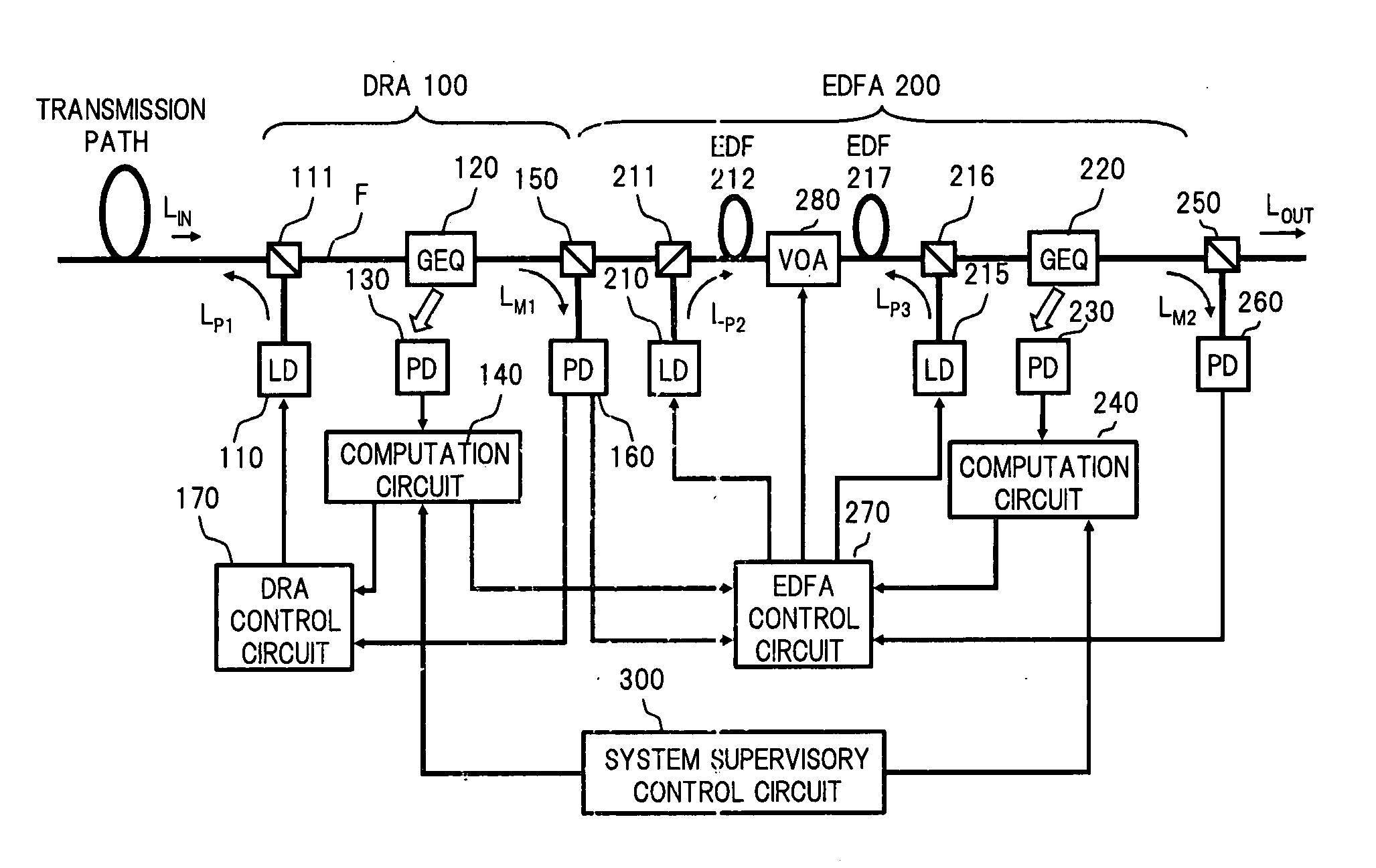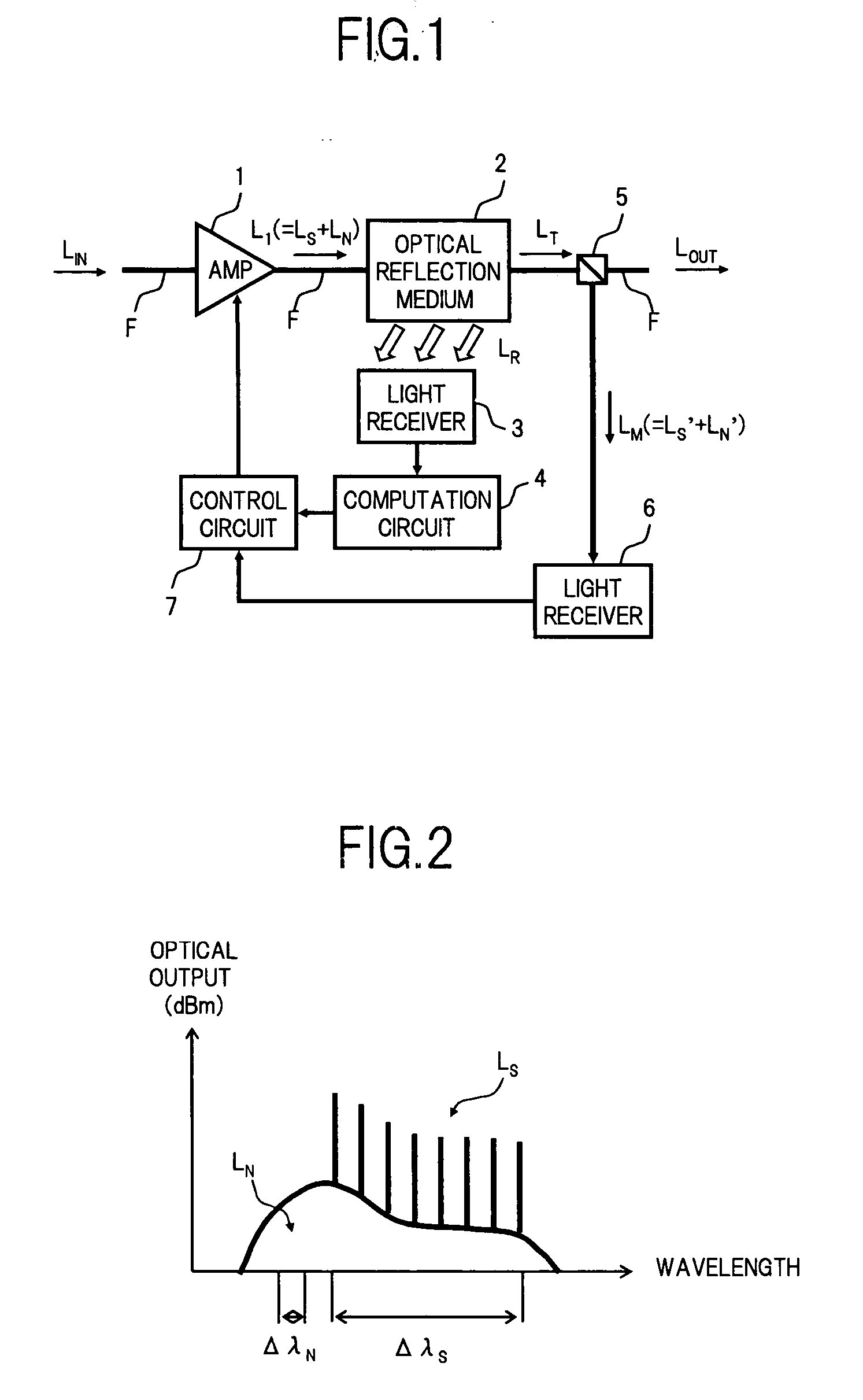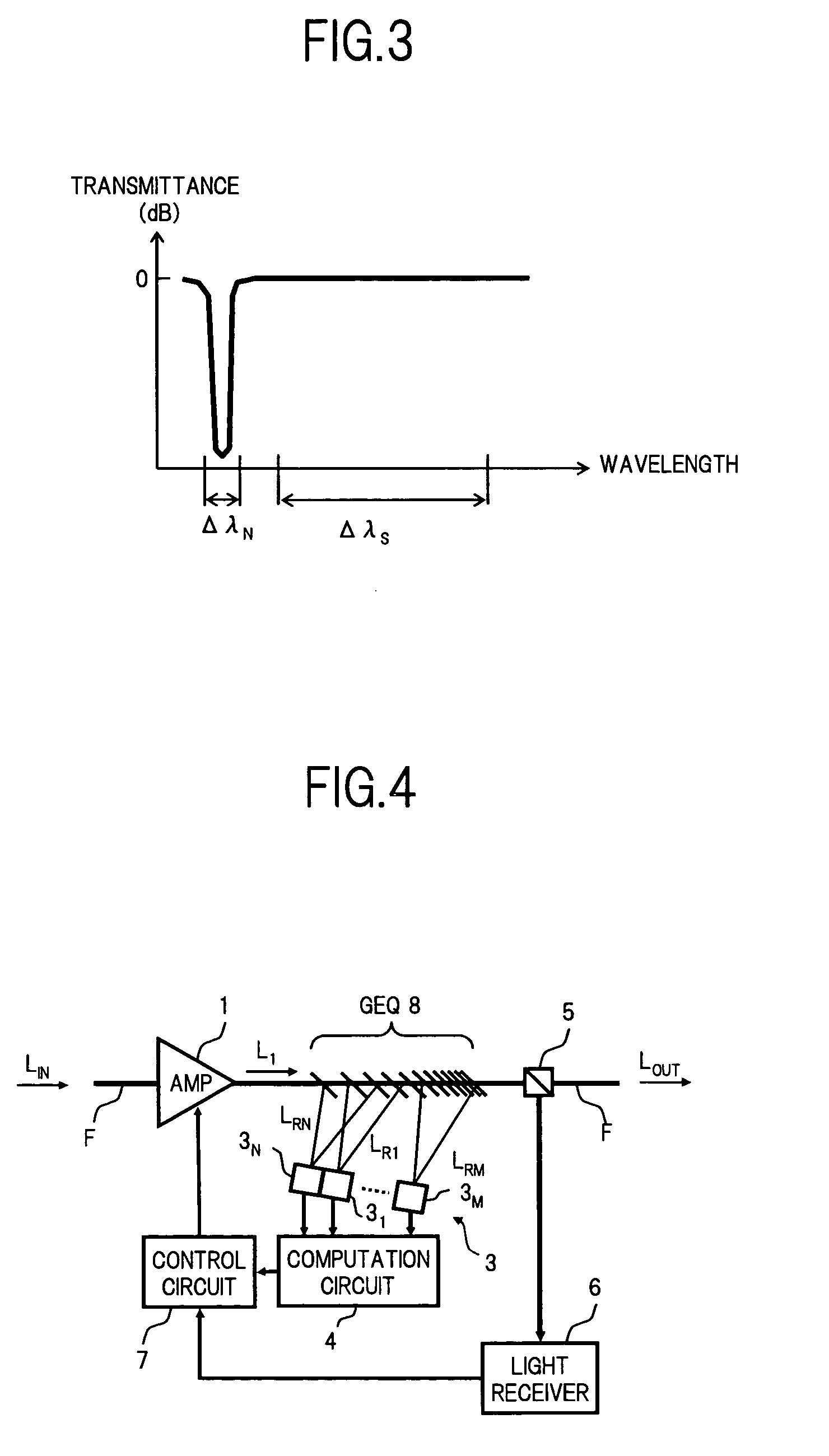Optical amplifier and optical monitor circuit
a monitor circuit and optical amplifier technology, applied in electromagnetic transmission, electromagnetic repeaters, transmission, etc., can solve the problems of input shutdown function, deterioration of control accuracy of optical amplifiers, deterioration of wavelength flatness of signal light power on the reception side, etc., to achieve low cost, simple circuit configuration, and high accuracy
- Summary
- Abstract
- Description
- Claims
- Application Information
AI Technical Summary
Benefits of technology
Problems solved by technology
Method used
Image
Examples
first embodiment
[0035]FIG. 1 is a block diagram showing a configuration of an optical amplifier according to the present invention.
[0036] In FIG. 1, the optical amplifier in the first embodiment comprises, for example, an optical amplifying circuit 1 as an optical amplification section that amplifies an input signal light LIN, an optical reflection medium 2 formed on an optical fiber F connected to the optical amplifying circuit 1, a light receiver 3 as a light receiving section that receives a light reflected to be radiated to the outside of a core of the optical fiber F by the optical reflection medium 2, to detect the power of the radiated light, and a computation circuit 4 as a computation section that computes the total power of a noise light generated in the optical amplifying circuit 1, based on the detection result in the light receiver 3. Further, this optical amplifier includes an optical branching device 5 which branches a part of a light output from the optical amplifying circuit 1 to b...
second embodiment
[0048] Next, the present invention will be described.
[0049]FIG. 4 is a block diagram showing a configuration of an optical amplifier in the second embodiment. The feature of the optical amplifier in the second embodiment is that a gain equalization optical filter (GEQ) 8 typically provided in a known optical amplifier which collectively amplifies the WDM light also includes a function as the optical reflection medium 2 in the above first embodiment.
[0050] The GEQ 8 is a fiber grating configured by combining a tilted configuration in which a Bragg diffraction grating is formed to be tilted to an axial direction of the optical fiber F and a chirped configuration in which grating spacing of the Bragg diffraction grating is gradually changed along the axial direction of the optical fiber F (to be referred to as a titled and chirped FBG hereunder). This tilted and chirped FBG is designed to have a transmission wavelength characteristic capable of flattening a gain wavelength characteris...
third embodiment
[0079] Next, the present invention will be described.
[0080]FIG. 10 is a block diagram showing a configuration of an optical amplifier in the second embodiment.
[0081] In FIG. 10, the optical amplifier in the third embodiment is a specific example in the case where the present invention is applied to a configuration in which a distributed Raman amplifier (DRA) 100 and an erbium doped optical fiber amplifier (EDFA) 200 are connected in cascade.
[0082] The DRA 100 on the former stage supplies a Raman amplification pumping light LP1 generated in a pumping light source (LD) 110 to an input side transmission path (optical amplification medium) via an optical multiplexer 111, to amplify a signal light being propagated through the transmission path due to a Raman effect. A noise light is generated with the Raman amplification of the signal light in the transmission path, and this noise light passes through the optical multiplexer 111 together with the Raman amplified signal light, to be inp...
PUM
 Login to View More
Login to View More Abstract
Description
Claims
Application Information
 Login to View More
Login to View More - R&D
- Intellectual Property
- Life Sciences
- Materials
- Tech Scout
- Unparalleled Data Quality
- Higher Quality Content
- 60% Fewer Hallucinations
Browse by: Latest US Patents, China's latest patents, Technical Efficacy Thesaurus, Application Domain, Technology Topic, Popular Technical Reports.
© 2025 PatSnap. All rights reserved.Legal|Privacy policy|Modern Slavery Act Transparency Statement|Sitemap|About US| Contact US: help@patsnap.com



